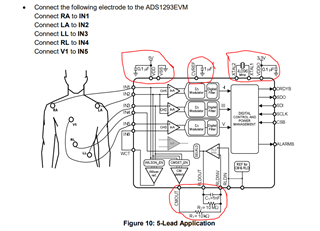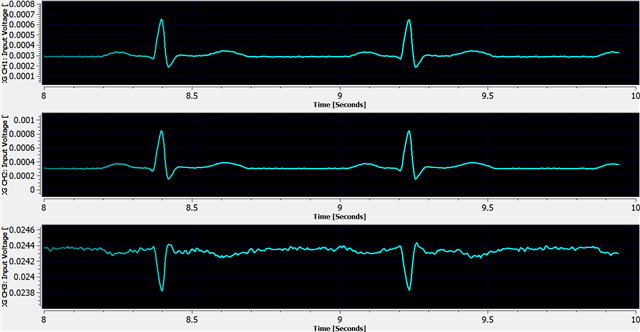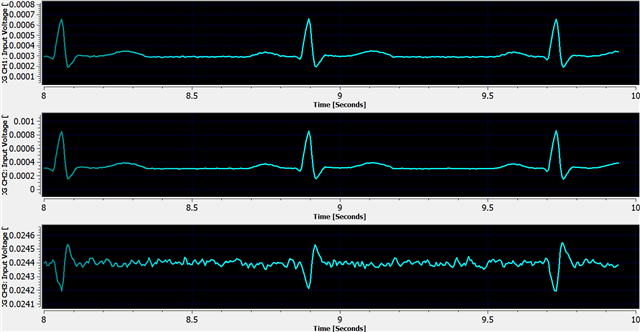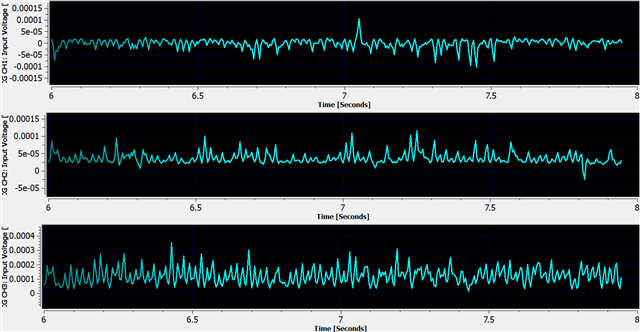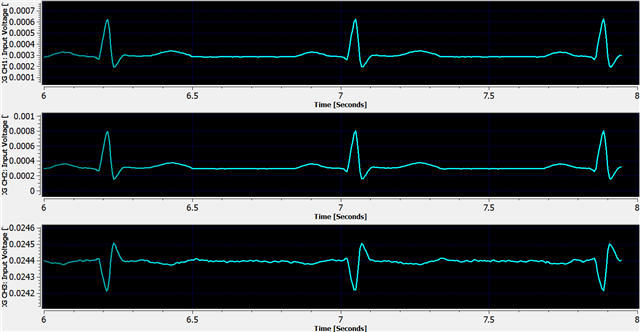Hi I am using the ADS1293EVM and have connected the inputs to a cardiac simulator. I have made the connections as per the below image
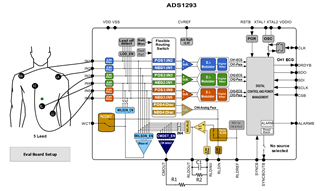
Following are the Register Values that I have set:
0x00,0x00
0x01,0x11
0x02,0x19
0x03,0x35
0x04,0x00
0x05,0x00
0x06,0x00
0x07,0x0f
0x08,0xff
0x09,0x00
0x0a,0x07
0x0b,0x01
0x0c,0x04
0x0d,0x01
0x0e,0x02
0x0f,0x03
0x10,0x05
0x11,0x02
0x12,0x04
0x13,0x07
0x14,0x00
0x15,0x00
0x16,0x00
0x17,0x05
0x18,0x00
0x19,0x00
0x1a,0x00
0x1b,0x00
0x1c,0x00
0x1d,0x00
0x21,0x01
0x22,0x20
0x23,0x20
0x24,0x20
0x25,0x00
0x26,0x00
0x27,0x08
0x28,0x00
0x29,0x00
0x2a,0x00
0x2b,0x00
0x2c,0x00
0x2d,0x00
0x2e,0x33
0x2f,0x70
0x30,0x00
0x31,0x00
0x32,0x00
0x33,0x00
0x34,0x00
0x35,0x00
0x36,0x00
0x37,0x00
0x38,0x00
0x39,0x00
0x3a,0x00
0x3b,0x00
0x3c,0x00
0x3d,0x00
0x3e,0x00
0x3f,0x00
0x40,0xff
0x50,0x00
0x60,0x00
0x62,0x00
I have set all the INA to High Resolution Mode. SDM are at 102400 Hz. R1 Rate set to Standard, R2 rate set to 4 and R3 rate for all channels are at 32. Now I am getting the below graph:
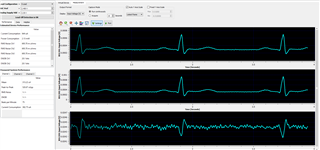
While Channel 1 and Channel 2 outputs seems noiseless, there is significant noise in the Channel 3 output. Can anyone throw some light on this? What I may be doing wrong?


